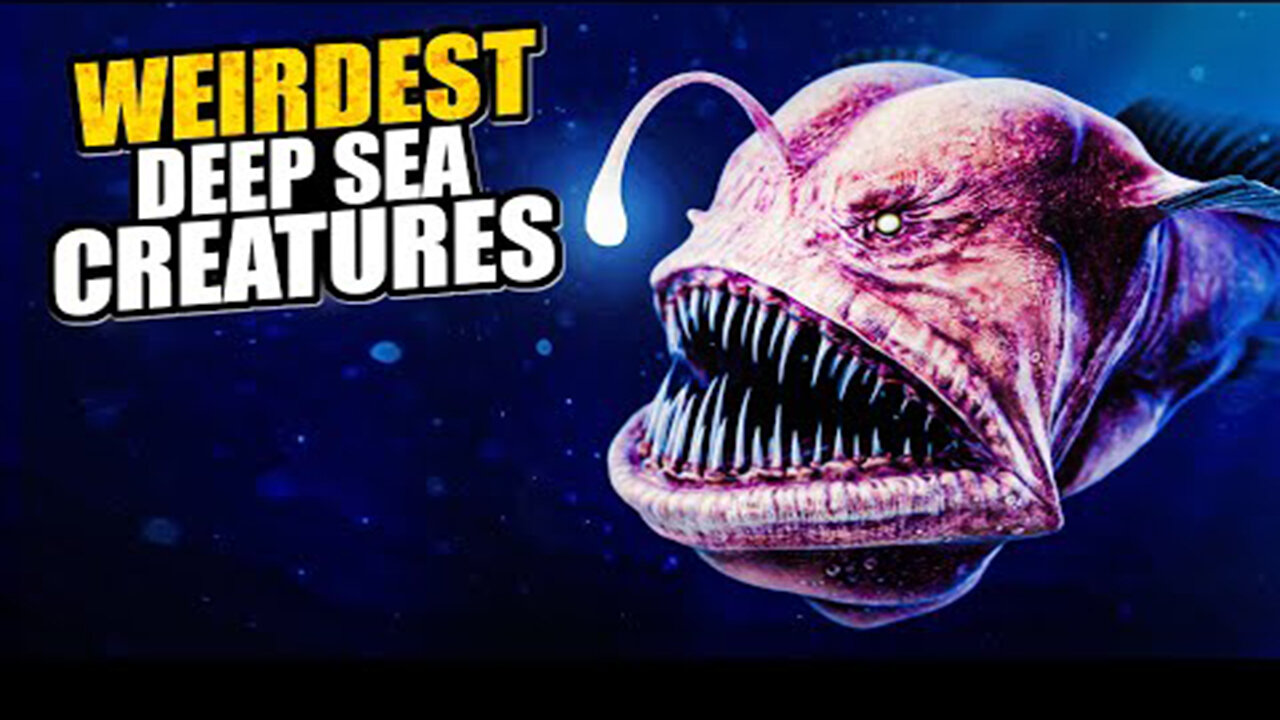Premium Only Content

Discovering the World's Most Elusive Aquatic Creatures
1. Giant Isopod: Giant isopods are crustaceans that belong to the same family as common pill bugs and shrimp. They are found in the deep waters of the Atlantic, Pacific and Indian Oceans, at depths of up to 7,000 feet. They can grow up to 2.5 feet long and weigh up to 4 pounds, making them one of the largest isopod species. Their bodies are flattened and have a hard exoskeleton that protects them from the pressure of the deep sea environment. Giant isopods are scavengers and feed on dead animals that fall to the ocean floor. They have a slow metabolism and can survive for long periods of time without food. Giant isopods are not dangerous to humans and are not commonly caught for food or other purposes. They have a unique ability to curl up into a ball when threatened, which protects their soft underbelly. Giant isopods are not currently considered endangered, but their deep sea habitat makes it difficult to study their populations. They are often seen in aquariums, where they can be kept in simulated deep sea environments.
2. Ribbon Eel: The Ribbon Eel (Rhinomuraena quaesita) is a species of marine eel found in the Indo-Pacific region. It has a distinctive appearance, with a long, thin body and a high dorsal fin that runs the length of its back. Its coloration varies with age and sex, with juveniles being black with a yellow dorsal fin and adults being blue with a yellow mouth. Ribbon Eels are carnivorous, feeding mainly on small fish and crustaceans. They are generally found living in sandy or muddy areas of shallow reefs, often in crevices or holes in the substrate. During the day, Ribbon Eels will often retreat into their burrows, only venturing out at night to hunt. They are also known to be solitary creatures, although some sightings have shown them living in pairs. The sex of Ribbon Eels can be determined by their coloration, with males being blue with a yellow dorsal fin and females being yellow with a black anal fin. Despite being a popular aquarium species, Ribbon Eels can be difficult to keep in captivity due to their specialized needs and sensitive nature. They are also threatened by overfishing and habitat destruction and are listed as a species of Least Concern on the IUCN Red List.
3. Nautilus: Nautilus is a type of marine mollusk that belongs to the cephalopod family. They have a distinctive spiral-shaped shell that they use for protection and buoyancy control. Nautiluses are found in the deep waters of the Indo-Pacific region and can live for up to 20 years. They are carnivorous, feeding on small fish and crustaceans. Nautiluses have a primitive nervous system and can only perform basic behaviors like swimming and crawling. They are considered living fossils and have changed very little in appearance over the past 500 million years. Nautiluses have been used in traditional medicine and as a source of jewelry and decoration. However, they are now threatened by overfishing and habitat destruction. Some species of nautilus are protected by law, and there are efforts to conserve and better understand these unique creatures.
4. Fangtooth: Fangtooths are a family of deep-sea fish known for their fearsome appearance and sharp teeth. They are found in oceans around the world, typically at depths of over 500 meters. Fangtooths have a dark brown or blackish coloration and a compressed body with a large head and mouth full of long, pointed teeth. Their eyes are relatively small, and they have a bioluminescent organ called a "photophore" on their chin that they use to attract prey. Despite their intimidating appearance, fangtooths are not a significant threat to humans, as they live in areas that are difficult for humans to reach. They are primarily scavengers, feeding on small fish and other marine creatures that sink to the seafloor. Some species of fangtooths are also hermaphroditic, meaning that they have both male and female reproductive organs.
5. Axolotl: Axolotl, also known as the Mexican walking fish, is a type of aquatic salamander that is native to Mexico. They are unique in that they retain their larval features throughout their entire lives, including their external gills. They are also capable of regenerating lost body parts, including limbs and even parts of their brain and spinal cord. Axolotls are commonly kept as pets and used in scientific research due to their regenerative abilities. However, they are also an endangered species in the wild due to habitat destruction and pollution.
6. Vampire Squid: The vampire squid (Vampyroteuthis infernalis) is a unique and fascinating deep-sea creature that lives in the oxygen minimum zone of the ocean. Despite its name, it is not actually a true squid, but rather belongs to a distinct lineage of cephalopods known as the Vampyromorpha.
-
 2:12:46
2:12:46
Price of Reason
21 hours agoAmber Heard BACKS Blake Lively Lawsuit Against Justin Baldoni! Is Disney CEO Bob Iger in TROUBLE?
44.6K13 -
 1:01:17
1:01:17
The StoneZONE with Roger Stone
16 hours agoChristmas Edition: Why the Panama Canal is Part of the America First Agenda | The StoneZONE
117K46 -
 18:12:15
18:12:15
LFA TV
1 day agoLFA TV CHRISTMAS EVE REPLAY
133K14 -
 13:32
13:32
Scammer Payback
17 hours agoChanging the Scammer's Desktop Background to his Location
6.35K3 -
 4:21
4:21
BIG NEM
19 hours agoNikola Tesla's Secret to Cultivating Creativity & Genius
4.14K1 -
 15:03
15:03
The Anthony Rogers Show
1 day agoAnthony Rogers - Live at Cusumano's Pizza (Upstairs)
3.26K1 -
 4:33:48
4:33:48
tacetmort3m
1 day ago🔴 LIVE - THE ZONE KEEPS PULLING ME BACK - STALKER 2 - PART 15
70.1K12 -
 22:45
22:45
Brewzle
23 hours agoI Went Drinking In A Real Bourbon Castle
50.8K4 -
 48:36
48:36
PMG
1 day ago $4.54 earned"Parkland Parent Speaks Out On Kamala Harris Using Victims"
41.3K12 -
 4:06
4:06
The Lou Holtz Show
21 hours agoCoach Lou Holtz’s Heartfelt Christmas Message 🎄 | Family, Faith & Notre Dame Spirit 💚 #christmas
30.2K1